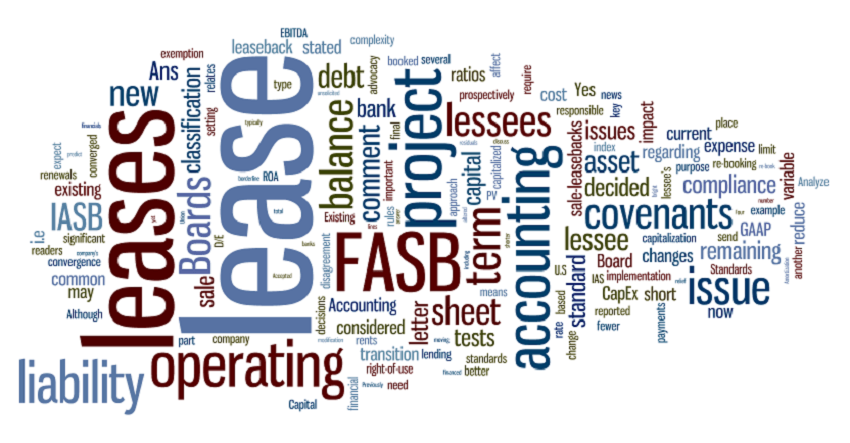Today’s post will focus on a hot topic for some business entities—that of the “going concern” assumption. Let’s start by setting the foundation. The “going concern” assumption isn’t explicitly discussed as much as it is applied in financial statements. People tend to invest in or lend money to entities that are expected to continue to operate for the foreseeable future. This expectation is what I discuss as the “going concern” assumption.
For decades financial statements have been prepared under this assumption. However, from time to time, entities may face significant operational, regulatory, legal, or other setbacks that raise substantial doubt about their ability to continue to operate as a going concern for a reasonable period of time (generally 12 months) after they issue their financial statements.
This distinction is important, because if an entity’s ability to continue as a going concern is substantially doubtful, then the entity must address this by disclosing details in its financial statements.
Up until 2014, there has not been a clear definition of the term “substantial doubt” in the accounting or auditing literature. As I will touch upon later in this post as well as in a subsequent post (because this will be a lengthy topic), due to the issuance of the FASB’s Accounting Standards Update (“ASU”) No. 2014-15 (issued in August 2014) we now have a clear definition, which I believe could prove problematic for audit firms, which are required to comply with auditing standards.
History
When we look back in history, we find that an entity’s external auditor has historically been responsible for assessing an entity’s ability to continue to operate as a going concern for a reasonable period of time. Said another way, management of the audited entity has typically not performed its own assessment, but has “outsourced” this responsibility to its external auditor. Possibly, this is due to management’s inherent bias that its business is not expected to fail in the near future and, therefore, the auditor should make this determination based on the audit evidence it has obtained.
Auditing Standards
U.S. GAAS defines the auditor’s responsibility in conducting this assessment. However, the term “substantial doubt” has never been clearly defined in auditing standards. Therefore, the interpretation and application of the auditor’s requirements to assess an entity’s ability to continue as a going concern has been largely left to the audit firm industry.
Accounting Regulator Seeks Comment from Industry
Anytime something is left to an industry where important decisions need to be made by applying professional judgment, naturally diversity in practice arises. As one would expect, over time diversity in practice became more and more prevalent. One way to gauge this is to review correspondence between the FASB and various audit firms regarding this very issue. In the FASB’s 2013 exposure draft (“ED”) related to what ultimately became ASU No. 2014-15, the FASB asked a series of questions, including the following:
Question 19: The Board notes in paragraph BC36 that its definition of substantial doubt most closely approximates the upper end of the range in the present interpretation of substantial doubt by auditors. Do you agree? Why or why not? Assuming it does represent the upper end of the range of current practice, how many fewer substantial doubt determinations would result from the proposed amendments? If the proposed amendments were finalized by the Board and similar changes were made to auditing standards, would the occurrence of audit opinions with an emphasis-of-matter paragraph discussing going concern uncertainties likewise decrease and be different from what is currently observed? If so, by how much? Is such a decrease an improvement over current practice? Why or why not?
For reference, paragraph BC36 in the ED states:
BC36. The Board decided to define substantial doubt in U.S. GAAP to reduce problems currently caused by different interpretations of its meaning in the auditing literature. The Board decided that substantial doubt about an entity’s going concern presumption should exist when information about conditions and events indicates that it is known or probable that the entity will be unable to meet its obligations within 24 months after the financial statement date, after considering the mitigating effect of all of management’s plans. This difference in considering management’s plans outside the ordinary course of business would appropriately distinguish the initial disclosure threshold from the substantial doubt assertion, and the Board believes that this definition most closely approximates the upper end of the range in the present interpretation of substantial doubt. Accordingly, if the proposed amendments were adopted by the Board and similar changes were made to auditing standards, the Board expects that there would be a lower incident of audit opinions with an emphasis of matter discussing going concern than is currently observed in practice. The likelihood threshold of probable is intended to have a consistent meaning with Topic 450, Contingencies.
A number of audit firms submitted responses to the FASB during the ED comment letter period, stating their positions regarding what the then existing industry practice was for auditors to define the “substantial doubt” threshold, which had been developed over years of application. Here is a sampling:
BDO USA, LLP
We do not believe the definition of substantial doubt in paragraph BC36 necessarily represents the upper range of the present interpretation of substantial doubt. In many instances, it appears consistent with the matters we currently consider in assessing the ability of an entity to continue as a going concern….
From this comment letter one implies a threshold under auditing standards that is equal to probable because it states the definition is consistent.
CohnReznick LLP
While we agree that the proposed definition is at the upper end of the range in the present interpretation of substantial doubt by auditors, we do not believe it will result in fewer substantial doubt determinations. Any disclosure of substantial doubt regarding an entity’s ability to continue as a going concern is viewed by users of financial statements as a dire assessment with severe consequences. Accordingly, auditors currently do not make such disclosures unless they consider them to be absolutely necessary. This is understandable since such disclosures could have adverse consequences on the entity’s ability to execute the actions it considers necessary to continue as a going concern.
From this comment letter one implies a threshold under the auditing standards of probable.
Crowe Horwath LLP
It is not readily apparent what evidence the Board considered in making the determination that the proposed definition of substantial doubt most closely approximates the upper end of the range in present interpretation of substantial doubt. Assuming similar changes were made to the auditing standards…we believe there will likely be fewer required substantial doubt emphasis-of-matter paragraphs in practice.
From this comment letter one implies a threshold under the auditing standards that is lower than probable, but does not indicate the threshold.
Deloitte & Touche LLP
The Board’s intention for the substantial-doubt definition to represent the “upper end range” in the present interpretation is not clear. If that is the Boards intent, the definition should be revised to clarify such. Without performing a specific analysis based on the proposed guidance, it is not clear how the frequency of disclosures or audit opinions with an emphasis-of-matter paragraph discussing going concerns would be impacted under the proposed definition compared to current practice. However, given the frequency of disclosure about an entity’s ability to continue as a going concern will most likely increase, we would expect the frequency of audit opinions with an emphasis-of-matter will most likely increase also (assuming the audit and accounting literature are aligned in such a manner).
From this comment letter one implies a threshold under the auditing standards that is other than “probable,” but one cannot make a determination as to what that threshold is. Perhaps the reason Deloitte stated that the frequency of going concern opinions “will most likely increase” is due to the Board’s proposal in paragraph BC36 to extend the look-forward period to 24 months from 12 months.
Grant Thornton LLP
We believe that the definition of substantial doubt in the proposed amendments does align with the upper end of the present interpretation of that term by auditors. Currently, we believe the lower end of the range for the requirement of going concern disclosures is somewhere between more-likely-than-not and probable.
From this comment letter one understands that the audit firm’s interpretation of the auditing standards is a range between “more likely than not” and “probable”.
KPMG LLP
We do not believe the proposed substantial doubt definition most closely approximates the upper end of the range in the present interpretation by auditors, but our views are limited to our experience in making such judgments. Accordingly, if the auditing standards were revised to define substantial doubt as a “probable” likelihood that the entity will not meet its obligations, we do not believe there would be a decrease in audit opinions with an explanatory paragraph. As proposed, we believe there would likely be an increase of explanatory paragraphs resulting from extending the current 12-month assessment period to 24 months.
From this comment letter one understands that audit firm believes the auditing standards have a different threshold than the proposed threshold in the ED, but the audit firm does not clarify.
Moss Adams LLP
We agree that the Board’s proposed definition approximates, and may exceed, the upper end of the range in the present interpretation of substantial doubt by auditors.
From this comment letter one implies a threshold under the auditing standards that is lower than “probable,” but does not indicate the threshold.
PricewaterhouseCoopers LLP
The auditing standards do not define substantial doubt. Therefore, auditors apply judgment based upon each company’s facts and circumstances which may result in diversity in practice. Auditors also have the ability to use an emphasis of a matter paragraph, pursuant to SAS 58, to highlight liquidity or other significant matters in their opinion, even if the substantial doubt threshold is not met. Therefore, it is difficult to calculate the impact of the proposed standard on all audit reports.
From this comment letter one understands there is diversity in practice, because the auditing standards do not define substantial doubt.
FASB issues ASU 2014-15
As mentioned previously, on August 27, 2014, the FASB issued ASU No. 2014-15 to communicate amendments to the FASB’s ASC 205-40, Disclosure of Uncertainties about an Entity’s Ability to Continue as a Going Concern. The FASB acknowledged that:
BC11. The [FASB] Board received input indicating that because of the lack of guidance in GAAP and the differing views about when there is substantial doubt about an entity’s ability to continue as a going concern, there is diversity in whether, when, and how an entity discloses the relevant conditions and events in its footnotes. The Board also received input indicating that if auditors are required by U.S. auditing standards to consider disclosures in the financial statement footnotes, then management should be provided with guidance in GAAP about those disclosures. The amendments in this Update provide guidance in GAAP about management’s responsibility to evaluate whether there is substantial doubt about an entity’s ability to continue as a going concern and to provide related footnote disclosures. In doing so, the amendments should reduce diversity in the timing and content of footnote disclosures.[1]
ASU 2014-15 clearly defines the term “substantial doubt” to exist “when conditions and events, considered in the aggregate, indicate that it is probable that the entity will be unable to meet its obligations as they become due within one year after the date that the financial statements are issued…” The ASU also clarifies that the term “probable,” as used in ASU 2014-15, is to be used consistently with its use in ASC 450 (“ASC 450”), Contingencies. (See ASU No. 2014-15, p. 7)
Auditing Standards – No clear definition!
The FASB’s clarification via ASU 2014-15 is good, reliable literature. Unfortunately, the PCAOB has not clarified what “substantial doubt” means in the context of going concern opinions.
Conclusion
Because audit firms are required to comply with auditing standards in conducting their audits, I foresee a disconnect in how auditors and management may approach this subject matter during year-end audits. To add to this, I believe the next downward economic cycle could likely bring this issue to surface for a number of companies and their auditors.
Stay tuned for an upcoming post where I will take this issue further and look more closely at this disconnect between accounting and auditing standards as practitioners weigh in.
Photo credit










